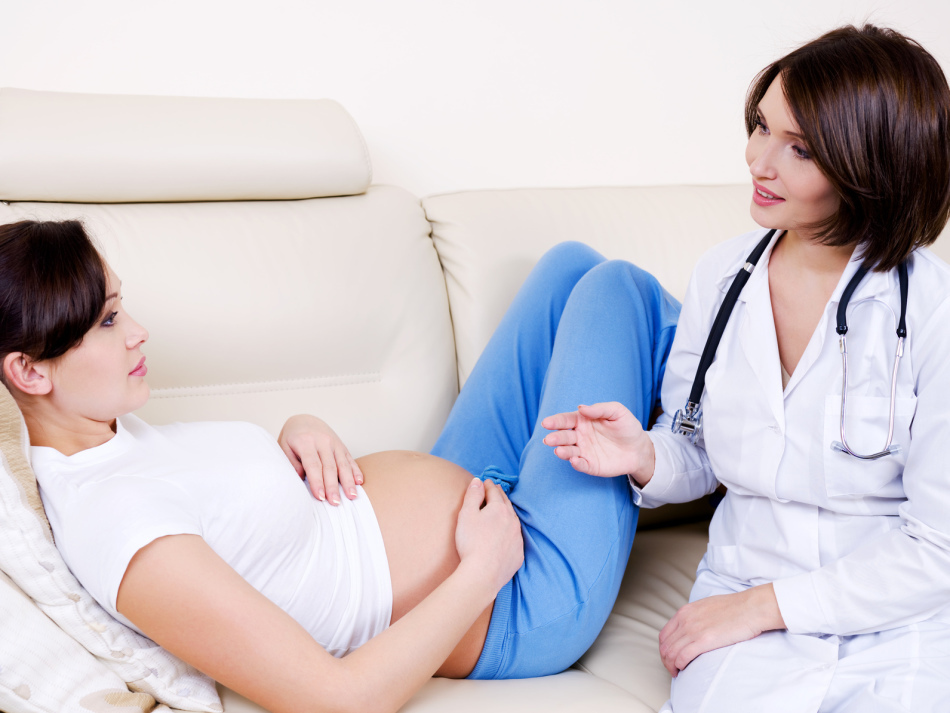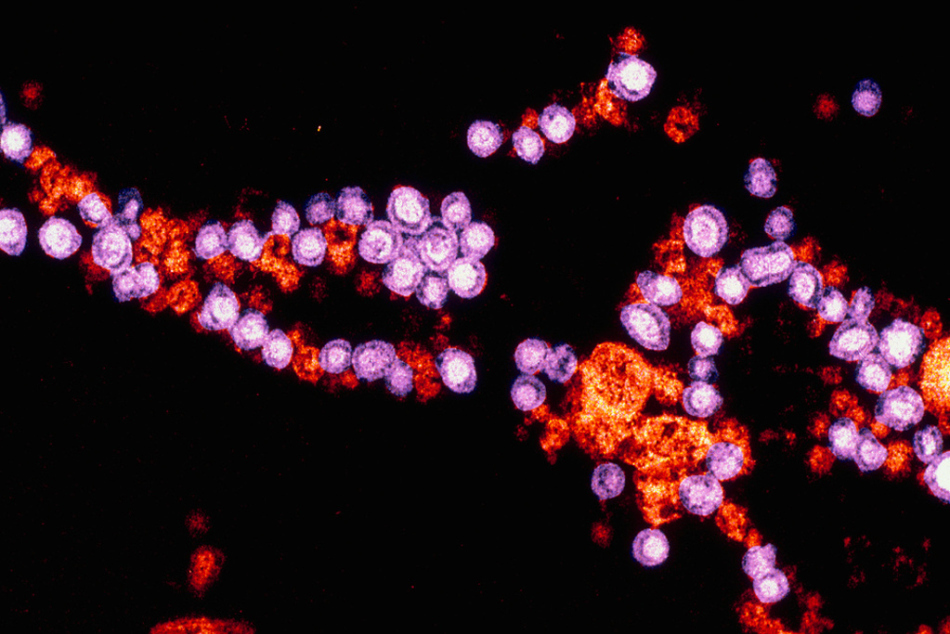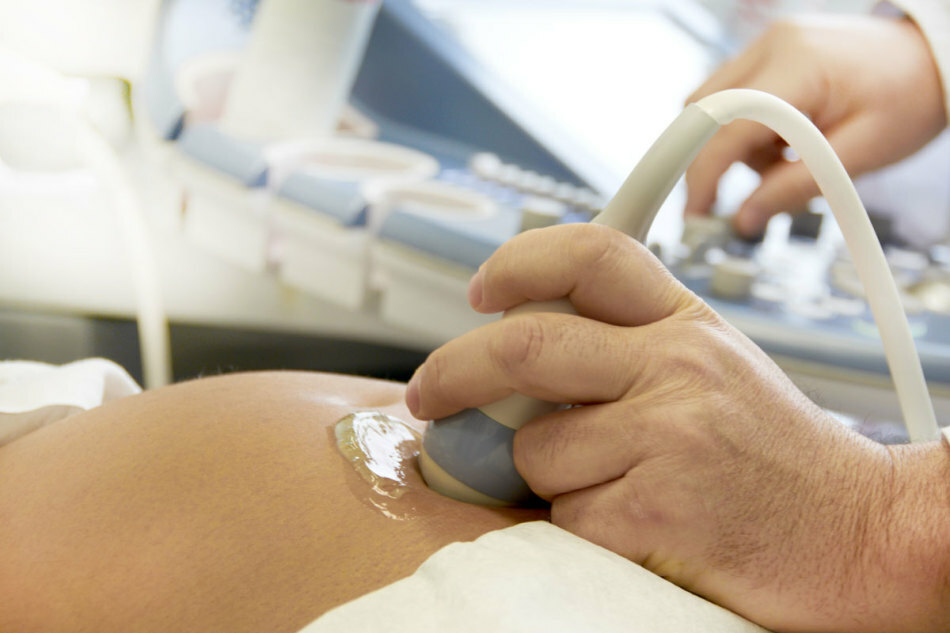In the article about how dangerous rubella is during pregnancy, how to detect and treat it.
Contents of
- Symptoms and signs of rubella in pregnant women
- Incubation period of rubella in pregnant women
- Video: Detection of rubella infection in pregnant women
- When to take an analysis of rubella in pregnant women? Rubella in pregnant women
- Rubella in pregnant women: consequences for the fetus
- Rubella in early pregnancy
- Rubella in pregnant women in the second trimester
- Rubella in pregnant women in the third trimester
- How to treat rubella in pregnant women?
- Through how much after a rubella it is possible to become pregnant?
- Rubella and pregnancy: advice and feedback
- Video: TORCH - Rubella( obstetrician gynecologist Anna Sotsuk)
Rubella, or rubella( from Latin rubella), is an acute and highly contagious disease that belongs to the so-called "childhood infections" group. Many suffer it in childhood. In children, the disease is quite easy and rarely gives complications.
As the resistant immunity is produced to rubella, the risk of getting sick again is practically reduced to zero. Adults, however, who did not "catch" it as a child, are ill more heavily. And for pregnant women, rubella, the infection of which occurred in the early stages, in general is fraught with serious consequences - malformations in the fetus or spontaneous abortion.
 Although rubella is considered a childish disease, it can also be caught during pregnancy.
Although rubella is considered a childish disease, it can also be caught during pregnancy. Symptoms and signs of rubella in pregnant women
Rubella is caused by the Rubella virus of the Rubivirus family, the Togaviridae family( Togaviruses). The infection occurs by airborne droplets. Rubella virus in the external environment does not live very long, therefore, in order to get sick, it is necessary to contact the carrier for a long time.
 Rubella virus
Rubella virus When rubbing with air currents into the upper respiratory tract of a person, the rubella virus affects first their epithelial tissue, and then penetrates into the blood and lymph nodes, where it replicates.
In children, rubella can occur typically, with erased symptoms or in general asymptomatic. In adults, pregnant women including, the symptoms are usually bright. This:
- enlarged lymph nodes( occipital, cervical, near-bow)
- fever
- cough
- joint and muscle pain, aches
- headache
- conjunctivitis
 Rubella during pregnancy can flow sharply or with lubricated symptoms
Rubella during pregnancy can flow sharply or with lubricated symptoms Rubella is also characteristic of the roseola orrose-oly-papular rash, which appears in the pregnant woman first on the face, later on the trunk, arms and legs. The rubella rash is always spreading from top to bottom.
The disease lasts from several days to two weeks. In adults, it is often complicated by viral arthritis( lasts 10-14 days), less often - encephalitis( approximately 1 case per 5000).
The incubation period of rubella in pregnant women
The source of infection is more often children, in particular, those who attend pre-school institutions and schools, mugs and sections. Therefore, during a period of time, women, pregnant with the second and subsequent times become ill. The carrier of the rubella virus is contagious 10 days before the onset of symptoms and until the secretion immunoglobulin A is produced in the serum and nasopharynx.
IMPORTANT: Immunoglobulin A( IgA) are proteins from the class of antibodies A that provide local immunity to
. The incubation period in a pregnant woman infected with rubella lasts 11-24 days.
Video: Detection of rubella infection in pregnant women
When to take an analysis of rubella in pregnant women? Rubella antibodies in pregnant women
 Rubella test included in the complex TORCH
Rubella test included in the complex TORCH The abbreviation TORCH is well known to all future mothers. This complex analysis for infectious diseases, they must necessarily pass at the stage of pregnancy planning or in the early stages of pregnancy, if it has already come. The letter "R" in this abbreviation just means rubella( rubella).
IMPORTANT: Other letters in the TORCH analysis name mean: T - toxoplasmosis( toxoplasmosis), C - cytomegalovirus( cytomegalovirus), H - herpes simplex virus( herpes).O - others, that is, other infections. Depending on the laboratory, chlamydia, syphilis, ureaplasmosis, gonococcal infection, viral hepatitis
may be included in the complex. Immunoglobulin A and immunoglobulin G values:
| Result | IgM | IgG |
| Immunity to rubella is absent / Vaccination is necessary | - | - |
| Rubella virus immunity is | - | + |
| Rubella in acute form, early period | + | - |
| Rubella in acute form, recovery period | + | + |
Fromasnuhi vaccinations. Usually, children under the age of 1 year are vaccinated, followed by a revaccination of 7 and 12-13 years. Unfortunately, a vaccine administered subcutaneously or intramuscularly does not allow the formation of immunity to the virus in the nasopharynx. Therefore, the risk of infection in an immunized person still exists.
If a woman gives an analysis for a TORCH infection, and he shows that he has no antibodies to rubella, you can get vaccinated against this infectious disease and in adulthood. Since a weakened but live rubella virus is being introduced, there is a theoretical possibility of infecting a fetus. Therefore, it is recommended that the vaccine be given no earlier than two months before the planned pregnancy.
Rubella in pregnant women: consequences for the fetus
If a woman in the condition develops rubella at 2-4 weeks of gestation, the fetal lesion occurs in 60% of cases, at 5-7 weeks - in 30% of cases, at 8 weeks and later - at 10%of cases.
 Consequences of rubella during pregnancy can be very serious
Consequences of rubella during pregnancy can be very serious Rubella in early pregnancy
The rubella virus penetrates the placental barrier. If a pregnant woman in the first trimester becomes ill with a rubella, it may even go to terminate the pregnancy. The fact is that during this period, all vital organs and systems are laid in the future child, therefore multiple developmental defects are possible.
Infection with rubella at 1 to 12 weeks of pregnancy is fraught with damage to the central nervous and cardiovascular systems of the fetus, its organs of vision and senses. The most common triad of the consequences of a future mother's disease in a child is heart disease, deafness and cataracts.
IMPORTANT: The three most common defects in fetal development caused by the virus are rubella called the triad of Greg, an Australian physician who first described these three anomalies of
. Other terrible consequences of "harmless" rubella in case of intrauterine infection can be:
- hemolytic disease
- microcephaly
- encephalitis
- Cerebral palsy
- developmental lag
- dystrophy
- lymphadenopathy
- abnormalities of facial skull anatomy( cleft palate)
In addition, the infection of the virus with rubella in the firstth trimester of pregnancy leads to a spontaneous abortion in 30% of cases, to stillbirth - in 20% of cases, the death of a child in the period of newborns - in 20% of cases.
Rubella in pregnant women in the second trimester
In the stratum of the second trimester of pregnancy, the organs and systems of the fetus are almost completely formed, so the consequences of rubella in the future mother can be serious, but not so catastrophic. Viral infection, affecting the placenta, can lead to:
- oxygen starvation of the fetus
- to its small weight
- lag in development for two weeks or more
- birth of a child with anemia
- weak immunity in a child
The risk of a dead child's birth falls to 10%.
Rubella in pregnant women in the third trimester
Congenital rubella in the third trimester often results in:
- to premature birth of
- birth abnormalities
- birth of a child with small height and low body mass
- childbirth with pneumonia
- subsequent child lag in the development of
The risk of fetal death of the fetus is reduced to 5%.
How to treat rubella in pregnant women?
The pregnant woman herself can tolerate rubella quite easily. For the period of illness it is isolated. It is important to comply with bed rest, consume plenty of fluids.
Medication is symptomatic. Usually prescribed:
- antipyretics and analgesics( Ibuprofen, Paracetamol)
 Combustion of temperature and reduce pain will help Paracetamol
Combustion of temperature and reduce pain will help Paracetamol - sulfanilomides - antimicrobials( Streptocide, Biseptol)
 Biseptol has a local antimicrobial effect
Biseptol has a local antimicrobial effect - antibiotics if necessary
If the rubella disease occurred before 16weeks, an abortion is shown. If the disease occurred before the 28th week, the developmental defects in the fetus are obvious and confirmed, artificial births are indicated.
If the disease occurred after the 28th week of pregnancy, the child undergoes additional surveillance, prevention of hypoxia and fetoplacental insufficiency. Childbirth is conducted in specialized maternity hospitals.
 If the rubella disease occurred late in pregnancy, the fetus should be monitored more often
If the rubella disease occurred late in pregnancy, the fetus should be monitored more often How much after rubella can you get pregnant?
According to some reports, developmental defects in the fetus arose even if the woman was sick with rubella 6-12 months before pregnancy. Doctors recommend planning a child not earlier than 18 months after recovering from this infectious disease.
Rubella and pregnancy: advice and feedback
Unfortunately, to protect yourself from infectious diseases during the bearing of a child a woman can not always. To prevent infection, when planning maternity, she should remember if she was sick with rubella in childhood, if there is a record on her medical record, take an analysis and, if necessary, get vaccinated.
